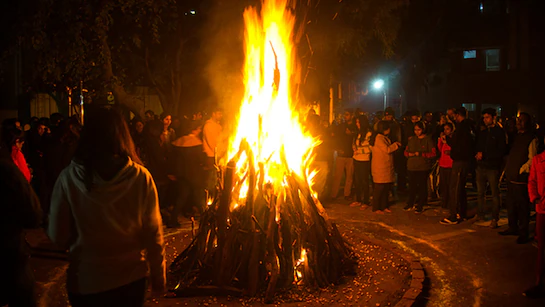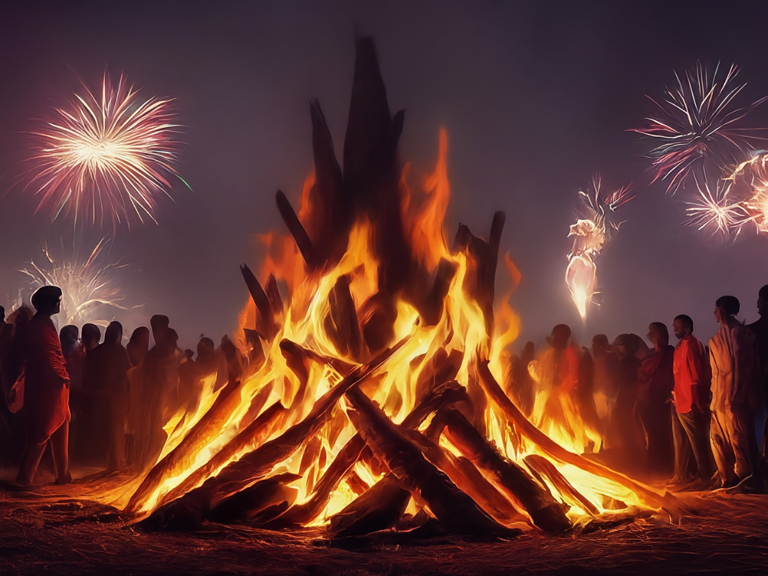
Table of Contents
- Introduction: The Eternal Flame of Celebration
- Fire in Indian Festivals: Holika Dahan and Beyond
- Ancient Symbolism: What Fire Represents
- Fire Across the Globe: A Universal Element of Ritual
- The Psychological Power of Fire in Celebrations
- Modern Interpretations of Fire in Festivals
- Conclusion: Carrying the Flame Forward
1. Introduction: The Eternal Flame of Celebration
There’s something ancient, something almost mystical about fire. It dances, it devours, it illuminates — and it unites. Across continents and cultures, fire has held a central place in our rituals, ceremonies, and festivals. From flickering diyas in India to roaring bonfires in Scandinavia, fire is more than just an element — it’s a symbol of transformation, purification, and celebration.
2. Fire in Indian Festivals: Holika Dahan and Beyond
In India, few festivals capture the essence of fire like Holika Dahan, the prelude to the colorful celebration of Holi. A towering bonfire crackles to life on the eve of Holi, signifying the triumph of good over evil — the burning of Holika, the demoness, and the survival of Prahlad, the devout.
But Holika Dahan isn’t alone. Diwali, the Festival of Lights, witnesses homes adorned with oil lamps (diyas) and firecrackers lighting up the night sky. Lohri, in Punjab, sees people dancing around bonfires in the heart of winter, giving thanks for a bountiful harvest.
3. Ancient Symbolism: What Fire Represents
In almost every mythology and religious text, fire is revered.
- Purification: Fire burns away the impure, cleansing both the physical and the spiritual.
- Transformation: It converts wood into ash, old into new — a metaphor for change and rebirth.
- Guidance: A beacon in the dark, fire represents enlightenment and divine presence.
In the Vedic tradition, Agni, the fire god, is the messenger between humans and the divine. In Christianity, the “tongues of fire” at Pentecost symbolize the Holy Spirit. Fire isn’t just part of ritual — it is the ritual.
4. Fire Across the Globe: A Universal Element of Ritual
While India reveres fire in Holika Dahan, other cultures also kindle their traditions around flame:
- Beltane Fire Festival in Scotland ignites bonfires to usher in summer and fertility.
- Japan’s Gozan no Okuribi lights enormous fires on Kyoto’s mountains to send spirits of ancestors back to the otherworld.
- Hanukkah in Judaism celebrates light with the menorah, a sacred candelabrum.
- Las Fallas in Spain features grand sculptures that are ceremonially burned, signifying renewal.
Whether in the freezing cold or under a summer moon, fire speaks a language every culture understands.
5. The Psychological Power of Fire in Celebrations
There’s an undeniable pull to the flicker of flames. Gathered around a fire, stories flow, songs emerge, and communities feel bonded. Fire brings warmth, but also reflection — a primal comfort that stirs the soul.
It’s no wonder that fire plays such a significant role in festivals. It taps into a deep, human memory — of survival, of wonder, of unity.
6. Modern Interpretations of Fire in Festivals
Today, even in a world of LED lights and digital displays, the tradition of fire holds strong. Fireworks dazzle the sky in modern festivals like New Year’s Eve, yet the core idea remains — marking change, celebrating the moment, and honoring the energy of beginnings.
In sustainable festivals, symbolic fires or LED simulations replace traditional flames, showing that even as technology evolves, the essence of fire remains irreplaceable.
7. Conclusion: Carrying the Flame Forward
Fire has always lit the way — through darkness, through winter, through sorrow, and through joy. From Holika Dahan to the fire festivals of the far North, it continues to be a reminder of resilience, community, and spirit.
As long as we gather, remember, and celebrate, fire will remain the heartbeat of our festivals — flickering with stories old and new, dancing in the light of human connection.

